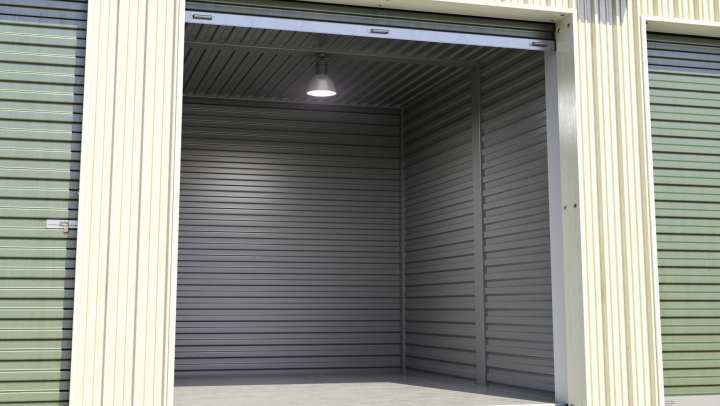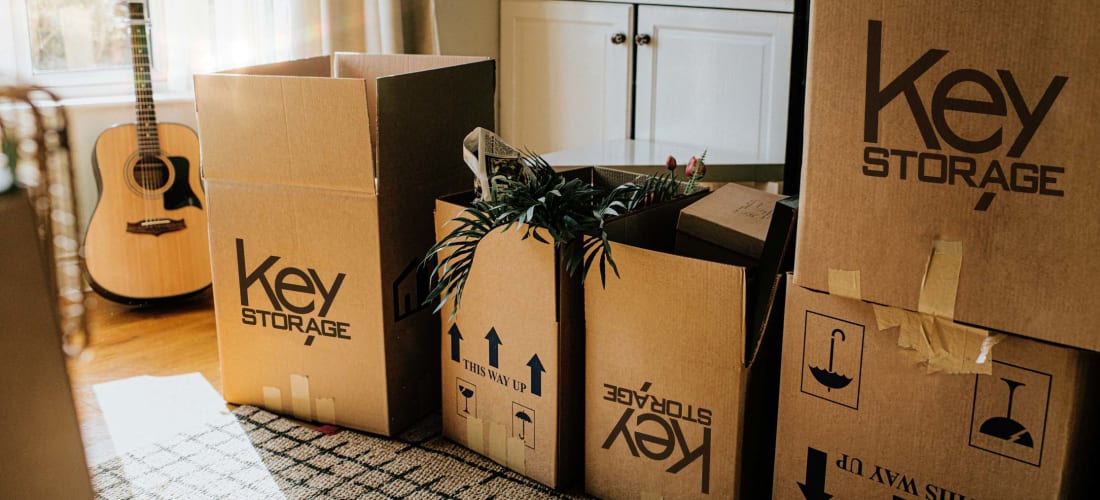How to Pick the Best Storage Unit Size for Your Needs
Choosing the right size storage unit is crucial. Whether storing business documents, vehicles, furniture, art, or packing up an entire house, you must determine how much space you’ll need. If you’re asking yourself, “how big of a storage unit do I need?” you need to first assess how much stuff you need to store.
Unfortunately, finding the right size storage unit isn’t always easy, but it can save you time, money, and frustration to get it right the first time. Read our guide below to learn how to pick the best storage unit size for your needs.
How Big of a Storage Unit Do I Need?
Finding the right size storage unit is necessary to ensure all your belongings are safe, secure, and protected. There are many different scenarios that could utilize a big storage space such as decluttering your home or packing up your furniture for the summer if you’re a college student. Some items are more valuable and delicate than others, such as a boat or motorcycle, so they may need extra space. For example, if you’re storing a vehicle, stacking boxes and other items next to it or on top of it could lead to dents, dings, and scratches.
So what size storage unit do you need? Here are a few steps to help you decide:
Before renting a storage unit, you must know which items you want to store and determine how much there really is. Making an inventory list of everything you plan to store, including furniture, books, art, outdoor equipment, and vehicles, can help you either find ways to pack everything up to maximize your potential storage space or give you an idea of how much there is to store, which can help you make a general guess about the storage unit size you’ll need.
In addition to your inventory list, which may list every large item, you should include the number of boxes. So, for example, if you’re storing books, you can put multiple books into the same box and count the box instead of the number of books. Meanwhile, larger items, like furniture, can be listed as is.
You should also take note of any items that might require a storage unit with special features. For example, antiques, books, and furniture may require climate-controlled storage with lower humidity and temperature levels to protect your belongings from heat and moisture.
Now that you have a list of all the items you want to store, you need to measure them in square feet and cubic feet. Square feet will give you an estimate of how much floor space you need, while cubic feet will give you the same measurement but include height to help you determine whether the storage unit is tall enough for all your belongings.
Measuring your items can seem daunting, but you can make it easier by either putting all the items into a large pile and measuring everything together or individually measuring each item and adding them.
Once you’ve measured your items, you should have a good estimate of how much space you’ll need in a storage unit. There are several storage options to choose from, including the following:
-
Small units: Small units are usually 5 x 5 or 5 x 10 ft. Compare these measurements to your belongings. For example, the smallest storage unit size of 5 x 5 ft will have a square footage of 25 ft. If the ceiling is 10 ft high, this gives you a total of 250 cubic ft of space to work with. Meanwhile, a 5 x 10 ft storage unit will give you 500 cubic ft of space. Small storage units are usually best for one bedroom, some pieces of furniture, and several boxes.
-
Medium units: Medium storage unit sizes range from 5 x 15 ft to 10 x 15 ft, giving you a total of 750 to 1,500 cubic ft of space. These units are ideal for bedroom furniture, several moving boxes, outdoor furniture, gear, or a single motorcycle.
-
Large units: Big storage units are 10 x 20 ft or larger. The largest storage units we offer are 10 x 30, with availability depending on location. At the very least, the largest storage unit sizes will provide a minimum of 2,000 cubic ft of space. Large storage units are ideal for three-bedroom homes, vehicles, outdoor gear, boats, large appliances, and dozens of moving boxes.
Before renting a storage unit, consider your measurements and factor in additional space. For example, you should be able to walk freely around your storage unit even though it might be fully packed. You should also account for objects that aren’t a perfect square and won’t fit snugly in a corner, such as furniture, outdoor gear, or a vehicle. If you do not need to get into your unit while storing, you can strategically pack belongings into a smaller unit in order to save some money. This method can be more ideal than having to go through items where you may need to create aisles within the unit to get to them easily.
Speak with one of our storage experts to help determine what size you will need to store your belongings. Sometimes even with written sizes, customers will choose the most cost effective option over what is actually needed. Having a discussion with one of our team members can help ensure you actually rent the correct size based on what you need stored.
How Do You Optimize Storage Space?
While getting the right size storage unit is essential to ensure you have enough space for all your stuff, optimizing your available space can help you save money. In addition, by maximizing the space in your unit, you can prevent the need for a second unit and reduce clutter, helping you to find items quickly and conveniently. Here are a few tips to help you optimize your storage space.
-
Stack items: Stack any items that won’t easily tip or fall over. When stacking items, be sure to put the heaviest ones on the bottom to provide more stability.
-
Use shelving: Adding shelving in your storage unit is the best way to stay organized while allowing you to easily open boxes and grab items without having to unstack and restack.
-
Store in boxes and containers: Always use moving boxes or containers for multiple small items like books or toys to reduce the clutter in your storage space. Additionally, you can use the space within washers & dryers and store items in there to save more room within the storage unit.
-
Label everything: Labeling everything and organizing boxes with the label facing toward you can help you more easily find items you’re looking for.
-
Create an inventory list: Your inventory can also provide some useful information, such as which items are grouped together in the same boxes.
-
Disassemble larger items: Whenever possible, disassemble larger items like tables, bed frames, and other items to reduce the space they’ll take up in your unit.
Wrapping Up: What Size Storage Unit Do I Need?
Instead of guessing the size storage unit you’ll need, you can take measurements of all your belongings and find the best option that still provides you with enough space to walk around. For example, the smallest storage unit size might be enough for a single bedroom for some people, while others need a medium-sized unit for all their belongings. Conversely, how much stuff you need to store can affect the unit size you need. For example, if you’re packing up your summer home, you may need the largest storage unit available.
Regardless of how many items you need to store and how large they are, Key Storage offers a range of storage unit sizes to help you find the best option for your belongings. Our smallest storage unit is 5 x 5 ft and ideal for small rooms, while our largest storage unit size is 10 x 30 ft and recommended for larger living spaces and appliances. However, Key Storage also offers larger unit sizes at select locations. Unsure of which size you need? Visit one of our storage locations for advice, or browse our storage unit listings on our website to learn more.


